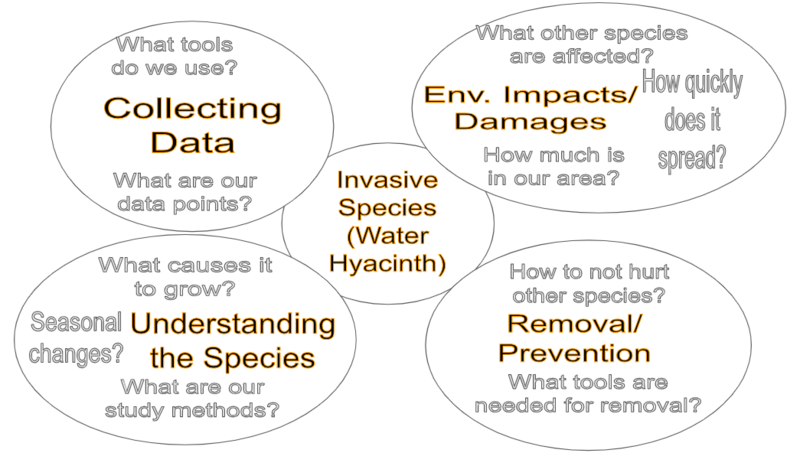Introduction:
We are an 8th grade class at Brother Martin High School in New Orleans, Louisiana doing research on invasive species in Louisiana. We are trying to research and fix this environmental issue as much as we can with populations of invasive species growing and help to reduce their impact on the environment. Of the world's 100 worst invasive species identified by the Fondation d'Entreprise, at least 13 occur in southern Louisiana.
Our main concern:
Our main concern is the movement of foreign, or otherwise known as, invasive species entering Louisiana because they may carry infectious diseases and may be harmful to our environment. Some of the species are harmful to our natural resources because they disrupt natural communities and ecological processes. Invasive species can change our food chain in serious ways. One species might out-compete the rest.
Obstacles and supporting information:
Some obstacles of researching invasive species are that as a class it may be difficult to find animals to research them, so we may have to stick to researching plants. Another problem is that there are a lot of different invasive species which could make it difficult to research them. Also it could be really hard to single out a few of them or one that we have access to. Finally, some invasive species can be harmful or dangerous.
Who is engaged in this concern?
In the U.S., many mandates and programs are in place to stop the spread of invasive species. Now the Coast Guard depends on the cooperation of global commercial shipping to prevent species from coming to Louisiana from different parts of the world. Federal and state laws prevent species on a plane, a train, or a ship. Also the Louisiana Aquatic Invasive Species and Advisory Council help to prevent invasive species. The Department of Agriculture, the Department of the Interior, Department of Transportation, and the Department of Primary Industries all help to prevent the spread of invasive species. The USGS (United States Geological Survey) scientists study hundreds of invasive species. Also, there are stakeholders which include the public/citizens (affected by and/or responsible for the spread and/or control of invasive species), researchers, government departments (responsible for the management of invaded areas or as policy makers.), Animal and Plant Health Inspection Service (APHIS) and The United States Department of Agriculture (USDA) help monitor the invasive species.
What are the initial questions?
What invasive species do we have in our area?
Where do they come from?
How do they get here?
What occasions in our area have this problem?
What problems do invasive species cause?
What is being done about this problem?

[NewOrleans-Invasive-Species]

1 Comments
PROGRESS REPORT!
Summary: As a class, we created a master plan to address our issue. Representatives from our class volunteered to photograph water hyacinth in different areas surrounding the New Orleans area. We used Google Earth to identify and display the locations where we took photographs. We analyzed and displayed the data using Google Slides. We had a group research on the Internet to find background information on water hyacinth. We had a separate group of students collaborate to propose solutions to this problem.
Here is our background information on water hyacinth:
Sources: UF-SFRC: Water hyacinth https://www.lakerestoration.com/t-water-hyacinth-control.aspx https://www.google.com/?safe=active&ssui=on https://www.invasivespeciesinfo.gov/aquatic/plants/water-hyacinth Wikipedia http://sfrc.ufl.edu/extension/4h/plants/Water_hyacinth/index.html#:~:text=The%20plants%2C%20which%20are%20high,a%20source%20of%20commercial%20cellulose. Invasive Species: Water Hyacinths | Louisiana Sea Grant
Data Collected (photographs):
[]()Proposed Solutions: - We could release Neochetina beetles into the area which would eat the WH. These beetles are known to eat the water hyacinth weed and removing and in a large group, they can remove the weed fast
The easiest way to remove the invasive species would be to go out on a boat and go near the shore and use a rake or some type of tool that can reach far out so we can easily remove it.
We could take a chemical(Glyphosate) and use that on the WH. This chemical is a safe chemical used to kill water like weeds. It would be a helpful way to kill the weed without damaging anything else.
Is this a question? Click here to post it to the Questions page.
Reply to this comment...
Log in to comment
Login to comment.